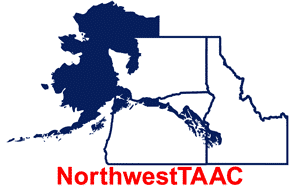September 16, 2010
Idaho Business Review
By Brad Carlson
Idaho’s timber market is at a near-perfect storm.
General market and overall economic conditions of the past three years have placed harvest and production levels well below normal, closing several mills across the Northwest.
“We have bled pretty hard for the last couple of years, and now we’re just treading water,” said Tamarack Mill LLC Vice President Rodney Krogh. The company, which operates mills in central and north central Idaho, has been in business for more than 40 years.
Krogh said if it’s not demand, it’s raw material availability or imports. And, if it’s not that, it’s managing costs. Tamarack Mill has finally worked through inventories of lumber purchased at high prices during the housing boom.
Production of lumber, the largest component of Idaho’s forest products industry, fell to an estimated 1.1 billion board feet in 2009 from just over 1.3 billion board feet in 2008, according to a report prepared by the University of Idaho in January 2010. The harvest for the previous year was at levels not seen since World War II. Over 80 percent of the facilities surveyed anticipated production to increase or stay about the same in 2010.
“The sawmill industry is very slow right now based on housing starts and unemployment,” Krogh said. “We’re probably looking at this kind of situation for at least another couple of years, with very little demand for lumber.”
A positive for Tamarack Mill, in addition to bringing inventory and production in line with demand, has been increased efficiency.
“We are always trying to upgrade our facilities, and technology is the biggest thing with sawmills,” Krogh said.
He recently applied for and received a $150,000 matching grant, from the Northwest Trade Adjustment Assistance Center, that helps to fund computer hardware and software technology to record material information and provide instant inventory specifications and costs. Northwest TAAC is a nonprofit corporation that helps businesses plan competitive strategies and become eligible for funding under the federal Economic Development Administration.
The computer program ultimately will benefit the Kooskia-based company’s operations at the Evergreen Forest sawmill in Tamarack and the Clearwater Forest planer mill and shipping yard in Kooskia. The firm also has a power co-generation plant at the Evergreen site – it sells to Idaho Power Co. – and has ownership in a trucking company.
Previously, log receiving, scaling and reporting processes were done manually. Scaling refers to taking a log’s dimensions and noting any defects; now it’s done with computerized tools that download the information. Krogh said the new process, which begins when arriving truckers use a touch screen to describe what they’re delivering and where it came from, takes the burden off of the administrative staff and provides up-to-the-minute information on costs.
Judy Klinkam, associate director with Northwest TAAC, said the organization helps businesses hurt by imports. The idea is to help them complete a project that makes them more competitive globally.
“Imports need to be one factor leading to a downturn in employment and sales in the last few years,” she said.
Krogh said Tamarack Mill continues to compete with Canadian wood.
“It’s still very competitive, especially in white fir, because their SPF (spruce, pine and white fir) competes with our white fir markets,” he said.
In late August, the Washington, D.C.-based lobbying group U.S. Coalition for Fair Lumber Imports said it may file a complaint against British Columbia wood producers, alleging hundreds of millions of dollars in damages had occurred to U.S. mills and producers. The complaint, under the Softwood Lumber Agreement, would claim B.C. producers have increased the proportion of low-grade timber it allows to be harvested. The Coalition for Fair Lumber Imports opposes unfair Canadian lumber trade practices including “gross under-pricing” of subsidized timber on government land.
Shawn Church, editor of the Random Lengths newsletter based in Eugene, Ore., said the 2006 U.S.-Canada Softwood Lumber Agreement imposes a penalty tax on Canadian lumber shipments to the U.S. based on the strength of the lumber market. As the market rises to certain levels, the tax goes down in steps – in the case of British Columbia, from 15 percent to 10 percent to 5 percent to zero – based on the Random Lengths Framing Lumber Composite Price reported weekly.
B.C.’s tax has been 15 percent for most of the time since the agreement has been in effect, because of the down housing market, he said. A mid-year spike in prices brought the tax down to zero in June, he said. The tax went to 10 percent in July, and since August has been back at 15 percent.
Canadian softwood lumber shipments to the U.S., as a percentage of total U.S. supply have dropped in each of the last five years, from 33.4 percent in 2005 to 26.4 percent in 2009. Recession in the U.S., the Softwood Lumber Agreement and efforts by Canadian companies to diversify their markets are among reasons, Church said. China became Canada’s top offshore destination last year, though the U.S. remains Canada’s top market overall, he said.
If a Softwood Lumber Agreement case is filed, it likely would be filed by the Office of the U.S. Trade Representative, not the Coalition, because the agreement is between the two governments, Church said.
Krogh said the new technology should help Tamarack Mill deal with import competition more effectively, having survived the other challenges in the still-difficult lumber business.
Reprinted with permission
